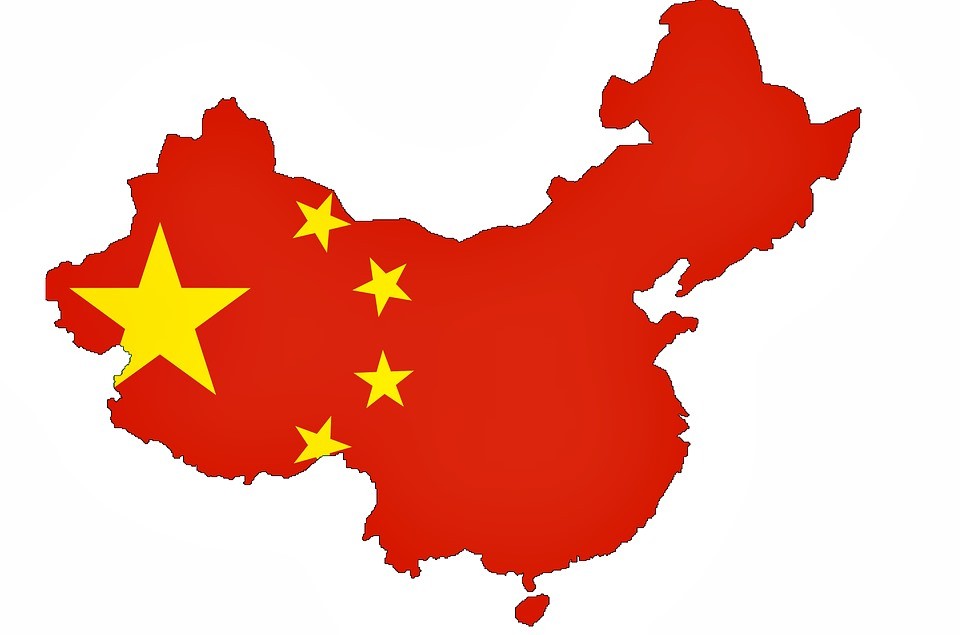Social Media
Social Media Marketing And Facebook – Why You Need A Profile

Over the past few years, social networking sites enabled by Web 2.0 technologies have dramatically changed the way we use the Internet. What was once a one-way connection has transformed into a dynamic connective medium, allowing users to share a wide range of content including blogs, photos, videos, and much more.
Yet how have social networking sites like Facebook changed the way online marketers advertise online? For one, they’ve made our jobs much easier. Facebook is the ideal medium for advertising within an environment that’s viral by nature. These online social directories use an interactive format that allows users to create a personal profile, connect to other users, and share content.
In a sense, these users have already effectively segmented themselves, coming together through like interest groups and connecting through content. These behaviors, which are inherent to social media and enabled by Web 2.0, create valuable networks of targeted and specific demographic groups. Now more than ever, the “Net Generation” is becoming involved in social media and presenting online marketers with the chance to market to predefined segments of online users, positioning branded messages on sites where these users spend time online.
Moreover, these social networking sites are growing at an exponential rate, adding more and more users from more diverse backgrounds. Initially, Facebook was created only for college students, but last year, it was opened to anyone with an email address. According to Microsoft, Facebook is the sixth most trafficked site in the U.S., and now has over 73 million registered users in 40,000 different collegiate, high school, work-related, and geographic networks. This represents a 530% growth rate over one year alone.
The tactic through which advertisers communicate with these segmented online audiences is known as Social Media Marketing (SMM). SMM has become a popular tool for search engine optimization (SEO) thanks to its unique ability to improve website visibility, name recognition, and brand awareness among specific online audiences through the acquisition of a network of relevant links.
So what opportunities does Facebook present for targeted online marketing efforts? Among Internet users ages 18-24, Facebook placed first on the list of favorite sites in Youth Trends most recent survey. Over 70% of females ages 17-25 indicated that Facebook was their favorite site in terms of time spent online. For males, this figure was still a powerful 56%. These demographic is clearly technology-driven, thanks to their growing up in a culture that considers time online an integral aspect of daily life. More than half of those surveyed visited Facebook at least once a day, logging an average of 35 minutes on the site.
Furthermore, these users are familiar with online environments and are adept at seeking out and finding specific pieces of content they’re interested in. Thus, social networking sites, especially Facebook, present online marketers with the opportunity to engage users with advertising messages at critical moments of relevance.
So how can we utilize social media marketing to effectively engage these elusive audiences of young adults? Below are several ideas on how to utilize social media marketing on Facebook.
- Connect Through Groups:
Facebook has an infinite number of shared interest groups which users join for a myriad of reasons. These groups cover an unlimited number of subjects and interests, from marine biology to snowboarding to politics to rap music to Italian food. No matter what your interest or target market, there is a group for you. Take it from me. I’ve been a registered Facebook user, or “Facebooker” since 2003, and I’ve seen a group for everything, literally. Many even have a local focus, like Denver Broncos fan groups or Denver Chinese Students Group. Each of these groups has its own page with a forum, discussion board, photo gallery, etc. This is the best place to position messages meant for specific niche audiences, as you’re almost guaranteed everyone who sees it fits your target profile. In the past, when I was trying to drive traffic to a video site I was working for, I placed descriptive and enticing links to relevant videos on the group’s “wall,” or discussion board. I saw great results as many of the members of this particular group, which was devoted to skiing, followed these links to watch videos about their favorite sport, skiing.
- Connect Through Applications:
Recently, Facebook has opened up its platform to outside developers who have created innumerable applications, ranging from fantasy stock picking simulators to video games of “beer pong” to world maps marking desired travel destinations. Users can add as many of these applications as they like to their profiles, creating opportunities for marketers and developers alike to subtly integrate marketing messages into these applications and their functions. Many developers have already done so and are not doubt reaping some major benefits, not only through increased brand awareness but through traffic driven from Facebook, which many have bridged to their own sites.
- Connect Through Content:
Because Facebook allows users to post videos, images, links, photos, and more, advertisers can seamlessly utilize social media marketing strategies to connect with these groups through content. By positioning your content where your target audience is, you can be assured your brand will be right in front of their eyes as they interact with your message. Facebook is a repository for an endless amount of consumer data, what many experts have dubbed “a community in a box.” So why not leverage this data by getting involved? Connect through content.
- Connect Through Events:
As Facebook has grown, it has added an “Events” section where users can post information about upcoming events and then invite their Facebook friends to attend. The entire section of events is searchable, and users can quickly locate events they’re interested in, find the host’s name, location, time, and even a description of the event. What’s more, Facebook gives each event its own page, where users can RSVP, decline to attend, or even post information on the event page’s public discussion wall, like what to wear, what to bring, etc. This presents social media marketers with a valuable opportunity to post events and then invite people that are most likely interested in attending. In my own experience with this medium, I’ve created events for clients and then posted information and invites within groups that align. For example, when promoting an upcoming reggae concert or college football game, find as many groups related to reggae music, college football, music and sports that you can, and post the event information on their group discussion boards to ensure that anyone who’s interested now knows and attends.
- Connect Through Mobile Devices:
Just this week, Facebook announced that it has partnered with RIM, or Research In Motion, and their BlackBerry device. In addition to BlackBerrys, Facebook is accessible to a wide range of other mobile devices. This presents valuable opportunities for advertisers to reach potential customers on a local level, positioning their company presence at the moment of relevance.
Still, Facebook’s explosive growth hasn’t been without challenges. In response to criticism from a plethora of groups, Facebook recently added additional security measures in an effort to better protect private information. In addition to assuaging privacy fears, this is sure to encourage more users to join the site and share more information about themselves. Yet this will also force social media marketers to be more innovative and creative when identifying and locating target audiences.
As you can see, Facebook users have taken care of the segmentation process, connecting themselves through content and shared interests. These behaviors, which are inherent to social media and enabled by Web 2.0, create valuable networks of targeted and specific demographic groups. Now more than ever, the “Net Generation” is becoming involved in social media and presenting online marketers with the chance to market to predefined segments of online users, positioning branded messages on sites where these users spend time online.
The company I work for, Fusionbox, a Denver Internet marketing company, uses social media marketing to combine the objectives of Internet marketing with the capabilities of social media sites and Web 2.0 technologies. Click here for more information on social media marketing [http://running-with-the-bulls-seo.blogspot.com/2007/09/social-media-marketing-bridging-gap.html].
Essentially, our SMM services create powerful forms of viral marketing that leverage the large audiences and user communities of social media sites. Whether on MySpace, YouTube, Digg, Facebook, Del.icio.us, Flickr, or any number of others, SMM revolves around the creation and connection of users to companies through unique content.
For this reason, SMM can be utilized to build a network of links, spread brand messages, increase visibility and awareness, and even manage your company’s reputation online. After all, these social media sites each have millions of registered users, grouped into like-interest communities. Now all you have to do is discern where your target audience is congregating online. What more could a marketer ask for? No other channel allows companies to declare their identity, service offerings, value proposition and location within such a targeted environment.
Our team of experienced and innovative social media marketers will effectively position your website content in a targeted digital space where it will be seen by those you want to see it.
Fusionbox is a leader in applying Web 2.0 technologies to the Internet marketing domain. Our services have been aptly deemed Web Marketing 2.0 because of our ability to connect clients to customers by engaging the market and initiating conversations through social media.
Social Media
The Phantom Growth of China's Ghost Cities

Bloomberg has a new video series out called "China's Ghost Cities."
The reporter, Adam Johnson, describes how the Chinese government is building massive cities that no one lives in yet. The expectation is that China is going to "grow" into these cities.
A remarkable idea, really. The authoritarian planners in Beijing or where decide it would be good if, say, a million people or more could relocate to a pre-planned area.
Then they build out the infrastructure – or rather the entire metropolis, skyscrapers, stops and all – and wait.
Stop for a moment and ponder how nutty this is. The last time your editor checked, central planning was not a huge success. According to history, bureaucrats wielding directives over long distances tend to allocate resources poorly.
But are ghost cities a recipe for a bust? Some say no. The Bloomberg reporter, for instance, assures us that China's economies are different – that is to say, "it's different this time." (Where have we heard that before …)
It is supposedly OK that these ghost cities, built for millions of refugees, have only tens of thousands of people living in them – because all that deserted square footage will eventually be put to good use.
As a bonus, building ghost cities is great for economic growth.
Via running superhighways out to the middle of nowhere, erecting steel and glass towers in the boondocks, China generates new jobs in construction, civil engineering, city planning and the like. All this construction looks fabulous on paper. The ghostly infrastructure gets counted as productive output, and the super-aggressive GDP target is maintained.
But what is wrong with that picture?
For one, there is the central planning problem. Growth and development are free market forces, with signature marks of trial and error. Successful cities are built from the ground up, not decreed by bureaucrat stamp. So how does the government know where a new metropolis should go, or what its optimal size should be?
Then you have the accounting problems. Should the promise of tomorrow be so read reflected on balance sheets today?
Imagine if a public corporation said, "We are going to grow 20% per year by building idle factories in the middle of nowhere, that no one is going to use for quite some time. will show up. We'll make a profit on them ever. Just do not ask when. "
Such a plan would be brutalized by the market, because public companies are held accountable for profits and return on investment (ROI). (At least most of the time – in bubble times investors will happily suspend their rational faculties.)
The Chinese government, of course, does not have to seek profit in its actions. Or it can measure results in some entirely non-traditional way, via "how many jobs did we create" or "how do the GDP numbers look."
At the end of the day, the "ghost city" mandate is directly channeling John Maynard Keynes, who once suggested digging holes, then filling them up again as a way to put men to work.
China is being more sophisticated. Rather than digging holes, it is putting up buildings. The effect is the same though. "Some day" the empty skyscrapers will have value – if they are not condemned as worn-out structures first – but until then they are just holes.
China bulls are not bothered by the ghost cities for at least three reasons.
First, they have convinced themselves (with more than a bit of faith) that the empty metropoli will one day (sooner rather than later) be full.
Second, they figure China has a lot of money to burn even if the ghost cities do not work out.
And third, as the old saying goes, "a rolling loan growers no loss." As long as the specialized music is playing, the property developers can keep dancing.
The trouble, as always, comes when the music stops. If China turns out to have built, say, 20 years of excess capacity by the time that happens, then hundreds of billions' worth of stagnant projects will have to be written off.
Tougher still is the idea that China's "economic miracle" is actually a heavily leveraged bet on mercantilism … propped up by runaway construction … with the tail end of the boom pushed recklessly from pie-in-the-sky projections for future growth.
That is another favorite tactic of investment manias: Along with the empire of forever skyward growth curves, mortgaging tomorrow (and borrowing against it) for the sake of today.
Even if China can write checks to cover the write-off costs of all those cities, there is a big multiple built in to the global economy right now on the assumption that China growth is the real deal. When it sinks in that much of growth is actually "ghost" or "phantom" growth – in keeping with these empty monuments to now – the collapse of that multiple could hurt.
Social Media
The Chinese Water Lantern Festival

The Chinese have designed and crafted lanterns that can float in water and glide in the air. Though sky lanterns were initially crafted as a device, to send signals, today they are used as decorative articles. Water Lanterns in Chinese festivals have its own importance.
There is an interesting story to the History of Chinese lanterns. It was believed that these lanterns, both the sky lanterns and the Water lanterns used in Chinese festivals were initially created out of necessity rather than artifacts for decorations. The Chinese have a history of inventing several new things and also leading the way in several new technologies. But, initially, the Chinese did not have access to or the knowhow to make a vital building material – Glass. Hence they did not have glass lanterns or glass windows. On the other hand, they had the skill of making paper. The paper industry in china was so advanced that it could produce paper that was very thin, to let light pass through it. They could also add beautiful colors and embellishments to the paper. Thus was born, the world’s first source of portable light – the lantern.
These lanterns were then gradually adapted to float in water and glide in the sky. Such was the skill of the Chinese craftsmen that these lanterns were used for lighting public places, homes and even battlefields. There is a story of a military strategist Zhuge Liang, having used paper lanterns to help the army march by night and attack by the day.
Over time, this battlefield beacon turned into an epitome of hope and wellbeing and festivity. The origin of the Lantern festival can be dated back to the Han Dynasty. During this time, the city is decorated with lanterns that are beautifully crafted in different shapes and sizes and then displayed with wishes or riddles written on them.
Water lanterns in Chinese festivals like the Moon Festival are a major tourist attraction. People from all over the world come to witness this event. On this day children and adults make or buy Water lanterns and write wishes on them. They then set these lanterns afloat in the water under the moonlight and watch them float away.
Water Lanterns in Chinese Festivals alongside other lanterns are used to light up the way to guide the spirit of their ancestors to come and bless them. Even today this tradition is followed, and people decorate their homes and public places to welcome their ancestors.
Health
Keemun Black Tea From China – Caffeine Content, Health Benefits, And Other Properties

Keemun is a type of Chinese black tea, originating in Qimen county of Anhui Province, China. This article gives an overview of the caffeine content, health benefits, and other properties of Keemun.
Keemun is primarily produced in Anhui province, but teas in this style have also begun to be produced in nearby Hubei, as well as in Jiangxi, and even in Taiwan. Keemun is usually described as having an earthy aroma, and its overall character is quite different from Indian and Ceylon teas. My personal perspective is that Keemun has a richer, warmer quality, often reminiscent of dried fruit, and in higher grades, a pleasing hint of wood or wood smoke. These teas are rich and full-bodied, and are among my favorite black teas.
Caffeine content:
Although you may be looking for more concrete information, it is hard to generalize about the caffeine content of Keemun. Even though it originates primarily in one region and shares certain aspects of production, Keemun is fairly diverse, coming in different grades. As a general rule though, Keemun is often in the moderate to high end of caffeine content, among teas, which means that it still has considerably less caffeine than a typical cup of coffee. Keemun has historically been used in breakfast blends, where strongly caffeinated teas were desired
Health benefits:
Keemun has actually been the subject of direct scientific study., in association with weight loss in animal studies. There is only a small amount of research referring specifically to this variety of tea, however, so most of what can be said about Keemun must be inferred from general studies about black tea.
Although green tea has a stronger association with supposed “health benefits” in the public consciousness in the United States, this association may be skewed by historical factors. Much of the early research on tea and health was conducted in Japan, where tea is synonymous with green tea. Subsequent research has found substantial evidence that black tea is healthy as well. In the absence of more reserach specifically looking at Keemun, it seems reasonable to conclude that Keemun is likely to have a similar amonut of health benefits to black tea.
Locating high-quality Keemun:
My recommendation, if you want to buy the best Keemun, is to buy exclusively loose-leaf. My experience is that the best Keemun is usually sold by companies that specialize in Chinese tea. Because they store relatively well, Chinese black teas, even those of considerably high quality, tend to be relatively inexpensive, with all but the highest grades (Keemun Hao Ya A and B, and Keemun Mao Feng) costing well under $10 for about 1/4 pound or about 100-125 grams. A few companies, including Rishi Tea, Arbor Teas, and Little Red Cup, sell fair trade certified Keemun, produced in Hubei, Anhui, and Jiangxi provinces, respectively.












